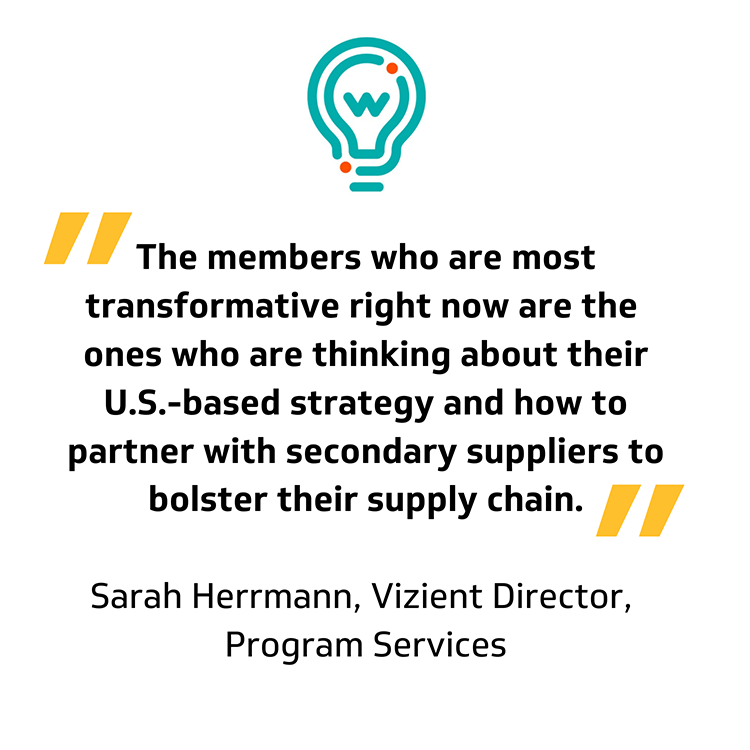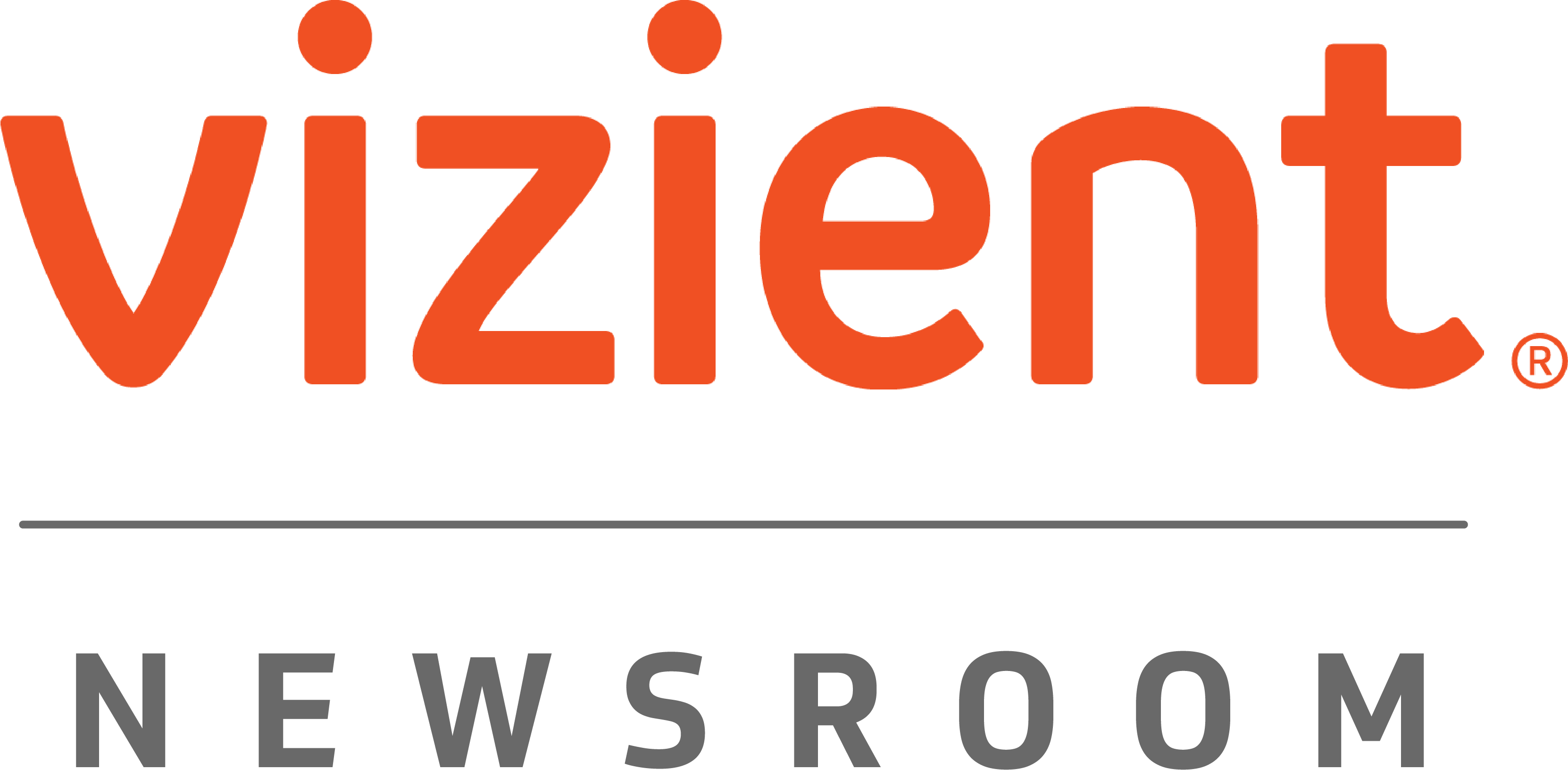For two years, half a million dollars in disposable isolation gowns sat unused in Encompass Group's Georgia-based warehouse. Demand for the gowns had diminished to the point that the company had stopped producing them — since most providers were ordering them from offshore private label manufacturers, Encompass Group instead shifted its attention to higher-demand categories.
But one month into the COVID-19 pandemic, those boxes of gowns were gone, snatched up in a single order. For health systems, acquiring personal protective equipment had become not just a matter of quantity, but speed — they needed a lot of PPE, and they needed it fast.
The overwhelming demand for PPE may have stabilized for now, but Vizient's efforts to head off shortages of essential supplies have only surged. In fact, an early-pandemic agreement between Vizient and Encompass Group to relaunch production of disposable isolation gowns in Encompass Group's Mexico-based facilities led to a collaboration that hit even closer to home: If Vizient members committed to 5 million gowns annually, Encompass Group would open a U.S.-based manufacturing facility near its Georgia headquarters. That new facility is set to open at the end of this year, with the ability to scale manufacturing as needed (members committed to the program essentially own the line and receive substantial discounts on the gowns).
"This agreement is about coming together to do the right thing and understand what is needed in healthcare," said John Wood, CEO of Encompass Group. "Forget about the past and think about what the solutions should be moving forward."
For Vizient, that means looking at domestic manufacturing not as a stopgap but as a permanent bridge to a more resilient, and flexible, supply chain. Vizient has worked to build those bridges via creative collaborations with suppliers, including beefing up category offerings through the Novaplus Enhanced Supply program and noting within the Vizient catalog products that are manufactured in the United States.
"If providers know that a portion of their supply volume is coming from somewhere domestic or nearshore, their peace of mind is enhanced," said Sarah Herrmann, director, program services for Vizient. "They don't have to worry about port shutdowns or factories in China closing due to another COVID outbreak. What we're really talking about is building partnerships for long-term supply assurance."
Increasing supply chain reliability and transparency

"The members who are most transformative right now," she said, "are the ones who are thinking about their U.S.-based strategy and how to partner with secondary suppliers to bolster their supply chain."
Strategic approaches to supply assurance, including diversification of distributors, have become particularly critical among an onslaught of supply chain challenges that are constricting access and expanding cost. Just this year, a COVID-19 outbreak led to a temporary shutdown of a GE Healthcare plant in Shanghai, the Russia-Ukraine conflict has disrupted imports of raw materials, drought has stalled crop production, and freight and fuel prices have soared.
Such events make transparency in the supply chain even more crucial — and domestic-focused programs give members a window into where supplies are manufactured. In May, Vizient added three new medical/surgical categories to its Novaplus Enhanced Supply program, with onshore and nearshore suppliers ensuring critical-need items such as durable medical equipment, non-invasive ventilation and sterile inhalation water. For example, the El Salvador-based supplier for sterile inhalation water, which is used for humidification during oxygen therapy, already has member commitments for more than 700,000 units, plus 90 days' worth of domestically stored inventory. Additional categories are expected to be added by the end of the year.
"We are continually communicating with our members and contracted suppliers to prepare for and mitigate against potential supply disruptions," said Margaret Steele, senior vice president of med/surg for Vizient. "It's part of a strategy Vizient began before the pandemic that we have since accelerated to ensure hospitals have the supplies and medications they need to continue delivering patient care."
Bolstering patient and environmental well-being

"Our members are searching for supply assurance to perform critical healthcare operations and are turning to Vizient as a trusted partner to provide bold, domestic solutions to help diversify their supply chains," said Cristina Indiveri, AVP, strategic programs and contract services for Vizient. "Members are requesting domestic products to not only meet their short-term resource needs, but to ensure a resilient and sustainable supply chain in the years to come."
Vizient's strategic programs are heavily focused on supply assurance, while simultaneously never losing sight of patient and environmental well-being. For years, Vizient has led the charge in identifying potentially harmful products in the supply chain and suggesting safer, more sustainable alternatives through resources such as its Environmentally Preferred Purchasing dashboard. Onshore distribution similarly supports the health of the planet and its people by reducing transportation emissions and may also equate to expedited shipping times, increased innovation, and a boosted U.S. economy and job market.
Of course, the elephant in the room is cost. And yes, domestic manufacturing can at times require more investment than overseas production. But the gap has narrowed, especially considering the current cost of shipping supplies internationally — and, moreover, the cost of not providing the necessary products for top-notch patient care. It's a lesson, born from a brutal pandemic, that Vizient has taken to heart.
"You need to be prepared for what's coming next," Steele said. "Providers need the kind of flexibility domestic manufacturing offers, where you don't have to tie up capital in 12 to 18 months of brown boxes in a warehouse. That capital can be used in better ways — to provide more comfort, and care, for patients."
